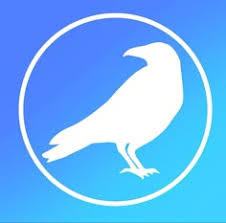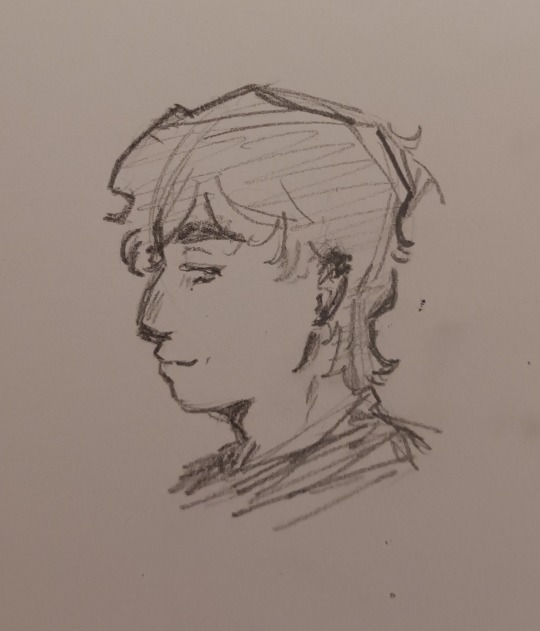I’m here to write, art, and everything else.Please ask me things Say hi to me on my yapping account @theopossumwrites
Don't wanna be here? Send us removal request.
Text
my fave writing reminder

honestly, this phrase has been on my mind more times than i can count. i've kidnapped it, taken it as a hostage with no ransom money because i need it to live permanently in my head.
51K notes
·
View notes
Text
like the first rule of cooking is to have fun and be yourself and the first rule of baking is to stay calm because the dough can sense fear
152K notes
·
View notes
Text
Random Stuff for Your Story
I have bookmarks saved for random, different, interesting topics that don’t really fit into any single category, so I decided to just put them all together in one list.

A list of resources on miscellaneous topics to help make your stories more interesting.
Writing Accurate Heist Scenes A tumblr thread that discusses accurate heist scenes for heist movies, and what it’s like to work as a security guard.
Friends, Not Love Interests Helpful advice for anyone who is writing two characters as friends (particularly when one is female and the other is male), in order to help minimize the chance of readers wanting them to fall in love.
The Writer’s Guide to Distinguishing Marks on Characters A basic guide on different types of distinguishing marks for characters, such as freckles, birthmarks, scars, and tattoos.
Don’t Use Specific Numbers in Your Story A tumblr thread that explains if your story doesn’t need a specific number for something (whether a date, age, span of time, etc.), then you don’t need to use a number. Includes helpful examples.
Pet Peeves in TV Shows and Movies A tumblr thread with different lists of things that people find annoying in TV shows and movies. Many of these things can also apply to situations in stories.
Types of Paperwork That Characters Could Do A tumblr thread that discusses how fanfiction writers often give their characters “large amounts of paperwork they hate doing,” but don’t describe the type of paperwork. Provides a list of different types of paperwork that characters could be working on.
In Time Travel Movies, When the Time Traveler Asks... A tumblr thread that discusses more realistic responses for when a time traveler asks what year it is or where they are, instead of people automatically thinking they are weird or crazy for asking.
Reasons for a Character’s Death Explains the reasons why you might kill off a character, and offers advice on how to make a character’s death meaningful.
Dialogue Responses to “I Thought You Were Dead!” A list of different responses that a character could give when someone else says, “I thought you were dead.”
+
I’m a writer, poet, and editor. I share writing resources that I’ve collected over the years and found helpful for my own writing. If you like my blog, follow me for more resources! ♡
3K notes
·
View notes
Text
DDD Icons and Wallpapers
this is a continuation on previous post here
now some art is mine but not all of it. I don't have the tags of the original creators but I made a good majority of these with some exceptions.






























Masterlist
888 notes
·
View notes
Text
Try the Proust Questionnaire to really get to know your characters
The Proust Questionnaire is a set of personality-revealing questions popularised by French writer Marcel Proust. It originated from a popular 19th-century parlor game but became famous after Proust answered a version of it in two different instances of his life—once as a teenager and later as an adult. The questionnaire is popularly used in interviews by publications like The Guardian and Vanity Fair.
Use the questionnaire and answering them from the point of view of your characters can help define their personality, desires, fears, and motivations. By answering in your character’s voice, you can also refine their way of thinking and speaking.
Here are the questions:
What is your idea of perfect happiness?
What is your greatest fear?
What is the trait you most deplore in yourself?
What is the trait you most deplore in others?
Which living person do you most admire?
What is your greatest extravagance?
What is your current state of mind?
What do you consider the most overrated virtue?
On what occasion do you lie?
What do you most dislike about your appearance?
Which living person do you most despise?
What is the quality you most like in a man?
What is the quality you most like in a woman?
Which words or phrases do you most overuse?
What or who is the greatest love of your life?
When and where were you happiest?
Which talent would you most like to have?
If you could change one thing about yourself, what would it be?
What do you consider your greatest achievement?
If you were to die and come back as a person or a thing, what would it be?
Where would you most like to live?
What is your most treasured possession?
What do you regard as the lowest depth of misery?
What is your favorite occupation?
What is your most marked characteristic?
What do you most value in your friends?
Who are your favorite writers?
Who is your hero of fiction?
Which historical figure do you most identify with?
Who are your heroes in real life?
What are your favorite names?
What is it that you most dislike?
What is your greatest regret?
How would you like to die?
What is your motto?
763 notes
·
View notes
Text
How to create an atmosphere: Forest
Sight
tall trees with thick canopies of leaves
alternating light coming in through the moving leafs of the trees
ground covered with a mix of grass, ferns, and fallen leaves
wildflowers adding splashes of colour
animals like deer, boars, squirrels, birds
insects like butterflies and bees add movement and life to the scene
Hearing
the air is filled with the melodious songs of birds
gentle rustling of leaves as the wind moves through the trees
constant hum and buzz of insects
the soft crunch of leaves, twigs, and soil while walking through the forest
Touch
the spongy feel and the soft coolness of moss
the rough texture of tree bark
the cooler temperature in the forest
with a gentle breeze that can be felt on your skin
Smell
the smell of fresh grass
the rich, earthy smell of soil and decaying leaves
the scent of fresh leaves, pine needles, and blooming flowers
the smell of the clean, slightly damp scent of water and wet earth from a nearby stream or pond
Taste
the clean taste of fresh air
the taste of sweet and tangy wildberries
the taste of self-picked mushrooms
the taste of edible wildflowers
the taste of a variety of nuts
the taste of wild greens
More: How to create an atmosphere
5K notes
·
View notes
Text
Beginners Guide to Descriptive Sentences
Hi writers.
I’m Rin T, and in this post I’m excited to share with you a detailed guide on how to craft vivid descriptions and descriptive sentences for your writing. I’ve long believed that descriptive writing is the magic that turns ordinary text into an immersive experience. When done well, every sentence acts like a brushstroke that paints a scene in the reader’s mind.
──────────────────────────── Why Descriptive Writing Matters ────────────────────────────
I have seen how powerful descriptions can engage readers and establish a strong connection with the narrative. Descriptive writing is not simply about decorating your work; it is about building an atmosphere that transports your reader to a world. your world.
When you write descriptions, remember:
You are setting the tone.
You are building a world.
You are evoking emotions.
You are inviting your readers to experience your story with all their senses.
──────────────────────────── Step-by-Step: Crafting Vivid Descriptions ────────────────────────────
Below are my personal tips and tricks to help you build detailed and captivating descriptions:
Begin With the Senses
Description does not solely depend on what the eyes can see. Consider sound, smell, taste, and touch. For instance, instead of writing “The witch’s hut was eerie,” try elaborating: “The witch’s hut exuded an eerie aura. The creaking timber and distant echoes of whispering winds mingled with the pungent aroma of burnt sage and mysterious herbs.” In this way, you help the reader not only see the scene but also feel it.
Choose Precise and Evocative Language
Precision in language is vital. Replace generic adjectives with specific details to boost clarity and imagery. Rather than “The forest was dark,” consider: “The forest was a labyrinth of shadowed boughs and muted undergrowth, where the light barely touched the spindly branches, and every step unveiled whispers of ancient spells.” Specific details create tangible images that stay with readers.
Show, Don’t Just Tell
A common mistake is to “tell” the reader how to feel, rather than “showing” it through context and detail. Instead of writing “It was a spooky night,” immerse your reader: “Under a pallid crescent moon, the night unfurled like a canvas of foreboding whispers; broken branches and rustling leaves narrated the secrets of a long-forgotten curse.” By showing the elements, you invite the reader to experience the fear and mystery firsthand. (You don't need to be as dramatic as my examples, but this is simply for inspiration)
Use Figurative Language Thoughtfully
Metaphors, similes, and other figures of speech lend an artistic flair to your descriptions. When writing about a scene in a magical world, you might say: “Her eyes shone like twin beacons of moonlit silver, cutting through the gloom as if to part the veil of night itself.” Such comparisons evoke emotions and deepen the reader’s connection with the scene. However, be cautious not to overdo it; a little figurative language can go a long way.
Strike a Balance Between Details and Pacing
While elaborate descriptions are alluring, too many details can weigh down your narrative. Consider introducing the broader scene first and then focusing on key elements that define the mood. For instance, start with an overview: “The village lay nestled between ancient stone arches and mist-covered hills.” Then, zoom into details: “A solitary, ivy-clad tower sent spiraling tendrils of mist into the twilight, as if guarding secrets of a long-lost incantation.” This technique creates a rhythm, drawing readers in gradually.
──────────────────────────── Practical Exercises to Enhance Your Descriptive Writing ───────────────���────────────
To help you practice these techniques, try the following exercises:
Sensory Detail Drill: Select a familiar scene from your fantasy world (for example, a witch’s secluded garden). Write a short paragraph focusing on each of the five senses. What do you taste as you bite into a magical fruit? What sounds resonate in the quiet of the enchanted night? This drill helps you to avoid flat descriptions and encourages you to integrate sensory experiences.
Revision and Refinement: Take a simple sentence like “The night was cold,” and transform it using the advice above. Rework it into something like, “The night was a canvas of shimmering frost and darkness, where every breath of the wind carried a hint of winter’s sorrow.” Compare the two, and notice how minor adjustments can dramatically heighten the mood.
Peer Review Sessions: Sharing your work can offer invaluable insights. Exchange your descriptions with fellow writers and ask for focused feedback, Does the description evoke the intended emotion? Does it deliver a clear image? Use these sessions as opportunities to improve and refine your craft.
──────────────────────────── Common Pitfalls and How to Avoid Them ────────────────────────────
Through my years of writing, I've learned that even the most passionate writers can stumble. Here are some pitfalls to watch out for:
Overloading With Adjectives: While it’s tempting to create elaborate descriptions, too many adjectives and adverbs can distract rather than enhance. Aim for clarity and purpose in every word. Instead of “a very dark, spooky, frightening forest filled with creepy sounds,” try “a forest shrouded in ominous silence, where every rustle hinted at unseen mysteries.”
Falling Into Clichés: Familiar images can sometimes render your work predictable. Try to avoid worn phrases. Instead of “as dark as night,” imagine “as impenetrable as the void that separates worlds.” Unique expressions capture attention and create lasting impressions.
Neglecting the Flow: Descriptions are vital, but the narrative must continue to drive forward. Check that your detailed passages serve to enhance the storyline rather than bog it down. Ask yourself: Does this description bring the reader closer to the action, or does it detract from the momentum of the narrative?
──────────────────────────── Advanced Techniques for the Aspiring Writer ────────────────────────────
Once you’re comfortable with the basics, consider these advanced methods to elevate your descriptions into artful prose:
Integrate Descriptions Seamlessly: Instead of isolating your descriptions, weave them into dialogue and action. For example, as a witch brews her potion, you might describe the bubbling cauldron and swirling mists as part of her incantation, not just as a standalone scene. “As she whispered the ancient words, the cauldron responded, its surface rippling like a dark mirror reflecting centuries of secrets.”
Reflect Character Perspectives: Let your characters’ emotions color the scene. If a character fears a looming threat, their perception will add a layer of tension to the environment. “I entered the dim corridor with trepidation, my heart pounding as the flickering torchlight revealed spectral figures dancing along the walls.” This technique makes the description both situational and personal.
Use Rhythm: The cadence of your sentences can mirror the pace of your narrative. In high-tension moments, short, abrupt sentences heighten the urgency. Conversely, in serene scenes, longer, flowing sentences can create a tranquil atmosphere. Experiment with sentence structure until you find a balance that suits both your style and the mood you wish to convey.
──────────────────────────── Final Thoughts and Encouragement ────────────────────────────
your narrative is your unique creation. you too will find your distinctive voice. I encourage you to keep experimenting with different techniques until your descriptions feel both natural and mesmerizing. Write freely, revise diligently, and most importantly, let your creative spirit shine through every line.
Thank you for joining me. I hope these tips can help you.
3K notes
·
View notes
Text
Other Words for "Look" + With meanings | List for writers
Many people create lists of synonyms for the word 'said,' but what about the word 'look'? Here are some synonyms that I enjoy using in my writing, along with their meanings for your reference. While all these words relate to 'look,' they each carry distinct meanings and nuances, so I thought it would be helpful to provide meanings for each one.
Gaze - To look steadily and intently, especially in admiration or thought.
Glance - A brief or hurried look.
Peek - A quick and typically secretive look.
Peer - To look with difficulty or concentration.
Scan - To look over quickly but thoroughly.
Observe - To watch carefully and attentively.
Inspect - To look at closely in order to assess condition or quality.
Stare - To look fixedly or vacantly at someone or something.
Glimpse - To see or perceive briefly or partially.
Eye - To look or stare at intently.
Peruse - To read or examine something with great care.
Scrutinize - To examine or inspect closely and thoroughly.
Behold - To see or observe a thing or person, especially a remarkable one.
Witness - To see something happen, typically a significant event.
Spot - To see, notice, or recognize someone or something.
Contemplate - To look thoughtfully for a long time at.
Sight - To suddenly or unexpectedly see something or someone.
Ogle - To stare at in a lecherous manner.
Leer - To look or gaze in an unpleasant, malicious way.
Gawk - To stare openly and stupidly.
Gape - To stare with one's mouth open wide, in amazement.
Squint - To look with eyes partially closed.
Regard - To consider or think of in a specified way.
Admire - To regard with pleasure, wonder, and approval.
Skim - To look through quickly to gain superficial knowledge.
Reconnoiter - To make a military observation of a region.
Flick - To look or move the eyes quickly.
Rake - To look through something rapidly and unsystematically.
Glare - To look angrily or fiercely.
Peep - To look quickly and secretly through an opening.
Focus - To concentrate one's visual effort on.
Discover - To find or realize something not clear before.
Spot-check - To examine something briefly or at random.
Devour - To look over with eager enthusiasm.
Examine - To inspect in detail to determine condition.
Feast one's eyes - To look at something with great enjoyment.
Catch sight of - To suddenly or unexpectedly see.
Clap eyes on - To suddenly see someone or something.
Set eyes on - To look at, especially for the first time.
Take a dekko - Colloquial for taking a look.
Leer at - To look or gaze in a suggestive manner.
Rubberneck - To stare at something in a foolish way.
Make out - To manage to see or read with difficulty.
Lay eyes on - To see or look at.
Pore over - To look at or read something intently.
Ogle at - To look at in a lecherous or predatory way.
Pry - To look or inquire into something in a determined manner.
Dart - To look quickly or furtively.
Drink in - To look at with great enjoyment or fascination.
Bask in - To look at or enjoy something for a period of time.
20K notes
·
View notes
Text
Physical Contact Masterpost
Hand-Holding Dialogue
Hand-Holding
Touching
Hugs
Hugging Dialogue
Touch Starved Prompts
Touches Ask Games
Super soft intimacy
Casual Affections
Seeking out physical affection
Romantic, non-sexual intimacy prompts
Kisses
First Kisses
First Kiss Prompts
Accidental Kisses
Places for kissing
Angsty Kisses
If you like my blog and want to support me, you can buy me a coffee or become a member! And check out my Instagram! 🥰
5K notes
·
View notes
Text
List of describing exercises to help you improve your descriptions.
As I try to improve my technical writing skills, I've noticed my describing skills are pretty lacking. So, here is a list of description exercises.
Setting Description
Pick a setting and describe it in a way that evokes a positive emotion, then describe the same setting negatively.
Pick a setting and try to describe it by using all of your senses.
Find a setting you've written before and write 500 words of pure description on it.
Describe a tree from the point of view of a character that's feeling a strong emotion, whether they're depressed, frustrated, or excited.
Character Description
Pick one of your characters and write a 500 word description of them.
Write a 500 word description on how your character feels about different people.
Pick 3 different characters and write 200 word descriptions for each of their voices.
Write a 500 word description about how your character looks at different people.
3K notes
·
View notes
Text
Writing Resources List

I use my blog to share writing resources that I’ve collected over the years. I’ve recently gotten some new followers, so I thought I would make a list of many of these resources for easy reference.
(However, this is not a complete list of all the resources I’ve posted. For more writing resources, feel free to check out my blog.)
Encouragement for Writers
Writer’s Block & Procrastination
Writing Your Story’s Plot
How to Write a Scene
Choosing a Setting for Your Story
Character Arc & Character Development
Character Traits
How to Write Heroes & Villains
Elemental Magic & Superpowers
Writing Magic Systems
Fantasy Writing & World-Building
Writing Fight Scenes
Swords and Bows
Writing Mermaids
Writing Relationships & Romance
Romance & Relationship Prompts
+
I’m a writer, poet, and editor. I share writing resources that I’ve collected over the years and found helpful for my own writing. If you like my blog, follow me for more resources! ♡
4K notes
·
View notes
Text
Writing with Colors

A list of resources to help you describe different colors in your writing.
The Color Thesaurus A collection of infographics that show various shades of different colors, each shade/color labeled by name.
Color Reference Chart Another collection of infographics that show various shades of different colors, each shade/color labeled by name.
Hair Color Reference Chart A collection of infographics that show various shades of different hair colors, each shade/color labeled by name.
Eye Color Reference Chart A collection of infographics that show various shades of blue, brown, and green eye colors, each shade/color labeled by name.
Different Ways to Describe Hazel Eyes A list of ideas and suggestions for describing hazel eyes. Can be used as prompts or for brainstorming.
Different Ways to Describe Green Eyes A list of ideas and suggestions for describing green eyes. Can be used as prompts or for brainstorming.
Different Ways to Describe Blue Eyes A list of ideas and suggestions for describing blue eyes. Can be used as prompts or for brainstorming.
Different Ways to Describe Brown Eyes A list of ideas and suggestions for describing brown eyes. Can be used as prompts or for brainstorming.
+
I’m a writer, poet, and editor. I share writing resources that I’ve collected over the years and found helpful for my own writing. If you like my blog, follow me for more resources! ♡
7K notes
·
View notes
Text
Fuck it. I’m re-watching Bridgerton and no one can stop me.
9 notes
·
View notes
Text
Isn’t that a kind of dog

Bernard doodle
32 notes
·
View notes
Text
Update yall, I have restarted on google sites and all is well. :)
I despise wix.com with every bone in my body.
There are three hundred and eighty-seven million miles of ideas I have for my website. If the word “hate” were engraved on each nano angstrom of those hundreds of millions of miles, it would not equal one-billionth, of the hate I feel for wix at this micro-instant.
4 notes
·
View notes
Text
I despise wix.com with every bone in my body.
There are three hundred and eighty-seven million miles of ideas I have for my website. If the word “hate” were engraved on each nano angstrom of those hundreds of millions of miles, it would not equal one-billionth, of the hate I feel for wix at this micro-instant.
#I was able to make ONE edit on my website over the course of two days#those two days were entirely spent waiting for wix to load#writing#writing troubles#wix#website#web development#going to claw my eyes out#ihnmaims#I think therefore I hate wix
4 notes
·
View notes
Text

ME!!!
2 notes
·
View notes